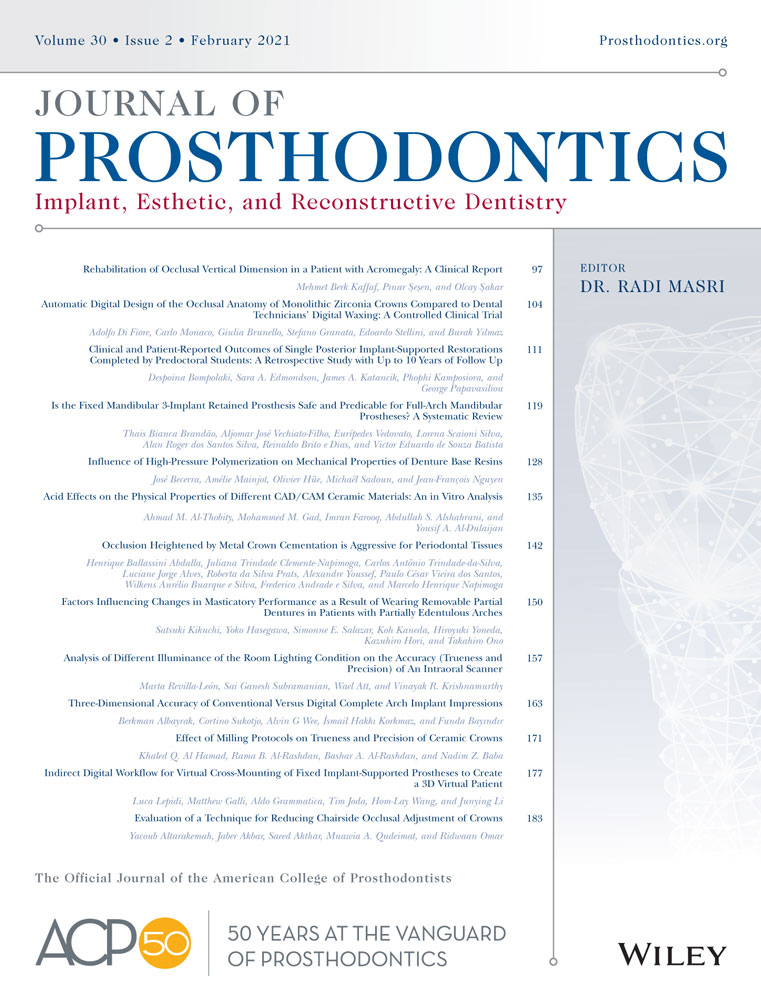Indirect Digital Workflow for Virtual Cross-Mounting of Fixed Implant-Supported Prostheses to Create a 3D Virtual Patient
This research did not receive any specific grant from funding agencies in the public, commercial, or not-for-profit sectors.
The authors declare that there are no conflicts of interest in this study.
Abstract
Mounting dental casts in an articulator is an important prerequisite for prosthodontic rehabilitation cases where the design of an accurate static and dynamic occlusion is needed. Virtual mounting can be achieved through the superimposition of various 3D images acquired from the hard and soft tissues of the patient. The purpose of this technical report is to describe a digital cross-mounting technique for patients undergoing implant-supported fixed prosthetic treatment. Through the use of face scanning, intraoral scanning, and cone beam computed tomography, this technique enables creation of a 3D virtual patient with occlusal registration in centric relation. Ultimately, the described methodology allows for the fabrication of definitive full-mouth implant-supported fixed prostheses.




